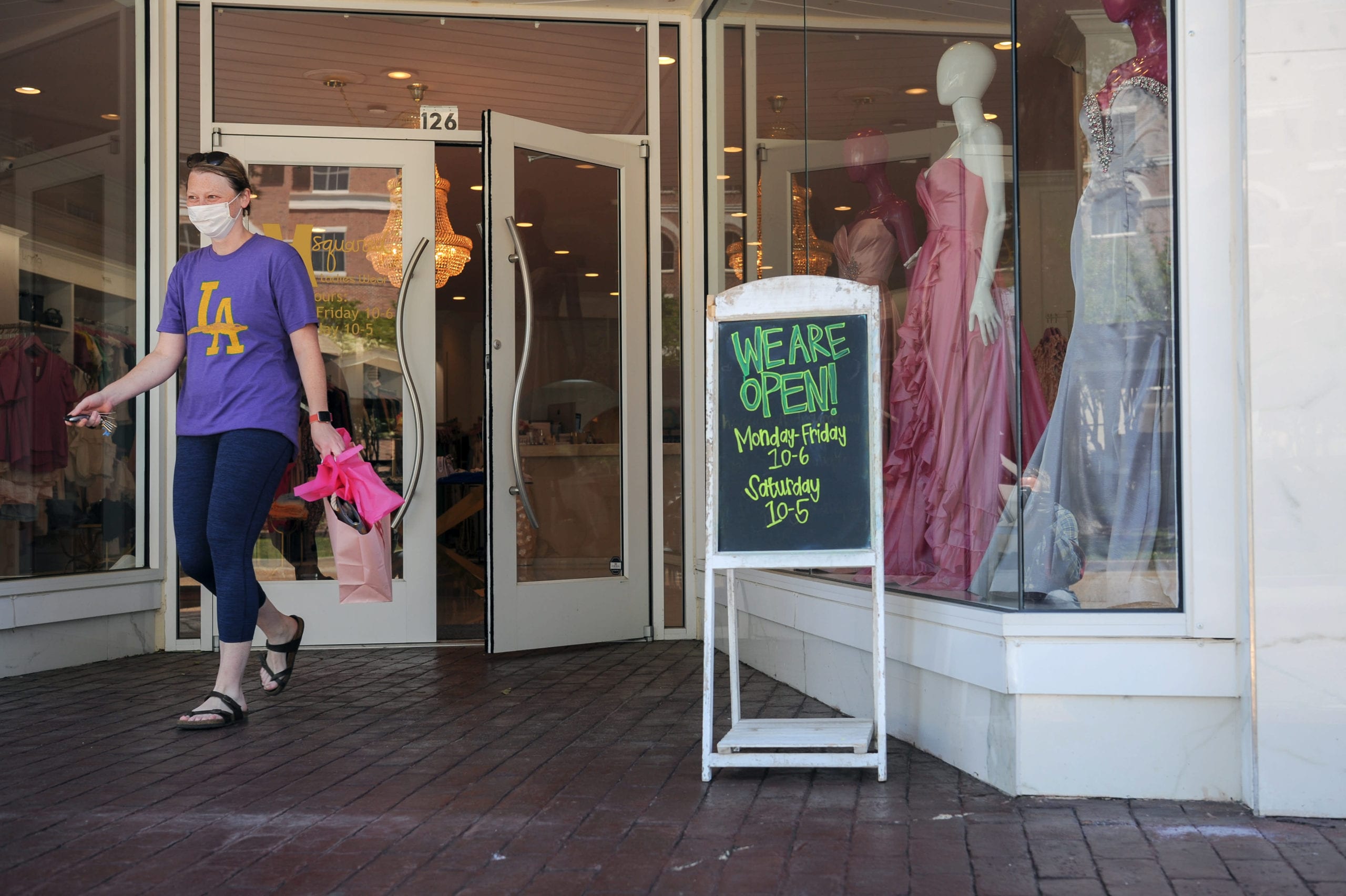[ad_1]
A shopper wearing a protective mask returns exits a retail store in Cleveland, Mississippi, U.S., on Thursday, April 30, 2020. Some retail stores began reopening at half-capacity in Mississippi after the stay-at-home order expired on April 27.
Rory Doyle | Bloomberg | Getty Images
We’ve been socially distancing for weeks now, riding out the coronavirus pandemic from our homes in the suburbs — or our studio apartments in Manhattan.
We’ve turned to remote working and learning, virtual happy hours with friends and family, online shopping and digital fitness apps just to stay sane. Various studies on the internet say it can take anywhere from three weeks to two months to form a new habit.
One way or another, many of us will emerge from this crisis with new ways of doing things — especially when it comes to consumption.
Retailers, in turn, will need to adapt. And fast. Shoppers will be looking for spaces where they feel safe.
A new report from Big Red Rooster, a brand experience firm owned by real estate services company JLL, highlights seven key ways we are changing as consumers because of Covid-19.
“You can’t un-live this experience,” said Emily Miller, VP of Strategy & Insight at Big Red Rooster, who added that while the Great Recession changed our financial habits, the coronavirus crisis will have a far more dramatic effect on a host of behaviors.
The new habits formed during this pandemic in 2020 will go “far beyond just our spending patterns,” Miller said.
Here’s the full list, as compiled by Big Red Rooster.
1. Look, don’t touch
The coronavirus pandemic is changing how we think about touching things. Studies have found the Covid-19 virus can last up to three days on plastic and stainless steel, and up to 24 hours on cardboard. It is still unclear how long it can linger on materials like clothing.
As people return to stores, many will be wary of picking up merchandise that has come in contact with others, pushing shopping carts and punching the buttons on credit-card readers.
The biggest U.S. mall owner, Simon Property Group, is already encouraging all of its retail tenants to use contactless payment methods, such as Apple Pay, CNBC reported earlier this week. Simon is preparing to reopen 49 of its roughly 200 malls and outlet centers, starting Friday.
Macy’s, as it sets out to reopen 68 stores come Monday, is going to hold the merchandise that customers try on in fitting rooms for 24 hours before returning it to racks. And it will mandate all customers use hand sanitizer before trying on jewelry or watches.
2. Protect your personal space
Similar to avoiding touching things, we are thinking more about protecting our personal bubbles.
For weeks on end now, we’ve been asked to keep at minimum six feet away from our neighbors. And those social distancing guidelines will likely be in place for some time into the foreseeable future.
When consumers venture out, tight and cramped spaces will be avoided. Open-air shopping centers will be preferred over enclosed shopping malls. Capacity will be limited in stores to make sure they do not become overcrowded.
Electronics retailer Best Buy, for example, is gradually reopening its stores — but only for in-store consultations by appointment.
3. Shop local
The pandemic has instilled in many consumers a greater interest in shopping local. People want to support their favorite coffee shops, breweries or dress boutiques — so that they don’t go out of business.
Many shoppers will still look to shop local, even post Covid-19, according to Miller, who said it has made more people realize how much they appreciate mom-and-pop shops.
Sixty-eight percent of people who have recently shopped local tipped more than they normally do, Big Red Rooster found in surveying 528 U.S. consumers, of various age groups, from April 9 to April 14.
4. Discretionary spending drops
In March, shoppers turned up in droves at grocery stores and Costco locations across the country, as fears about the virus spread and mandated lockdowns seemed inevitable. The pandemic has led many of us to focus on stocking up on groceries and household essentials, while cutting back spending on apparel and other things we don’t immediately need. Meantime, by mid-March, many stores deemed nonessential like Macy’s and Gap started to shut their doors.
Retail sales plunged 8.7% in March, the biggest decline since the government started tracking the sales in 1992. The drop is expected to be even greater in April.
We are also in the midst of the worst employment crisis in U.S. history. Over six weeks, 30.3 million Americans have filed for unemployment insurance.
Big Red Rooster’s Miller predicts, similar to after the Great Recession, consumers will be looking for bargains for quite some time and will think twice before getting a new pair of shoes.
Retailers that sell things like clothes, jewelry and other accessories will need to adapt or risk their sales slumping.
“We’ve just got to figure out a way to be relevant. … We don’t sell things people need, we sell things people want,” Pete Nordstrom, the department store chain’s president and chief brand officer, said last month during a virtual Vogue Global Conference.
5. Everything goes virtual
This pandemic has accelerated the rate of people meeting, learning, exercising and even dating virtually.
And while online shopping was already booming prior to Covid-19 slamming the U.S. economy and forcing many retailers to close their doors, it is even more popular today.
Retailers are going to need to get creative, as consumers become more comfortable buying things on the internet.
They’ll need to find better ways to showcase inventory online, and to make sure shoppers know what size clothes and shoes to buy.
Warby Parker, for example, has a virtual try-on feature for its glasses on its website. Companies will need to offer more experiences like this, Miller said.
6. Loyal to brands that give you confidence
Consumers are going to be looking to buy from brands that are sensitive to the crisis, as well as individuals’ health and safety, Miller said. These companies make customers feel more confident and better about their decisions in shopping there, she said.
She cited Nike as one example.
The sneaker giant in March released an ad that said, “Play inside, play for the world,” encouraging people to stay indoors during the pandemic to reduce the spread of Covid-19.
Another thing many consumers will be looking for is an emphasis on cleanliness in stores, and how retailers are treating their employees.
7. Globally driven decisions
The coronavirus pandemic has also gotten us to think global — not just local.
“We are having these shared experiences on a human level,” Miller explained. “Maybe you’re sitting in your house … in Ohio … and seeing people in Italy have the same experience. We’re trying to find ways to keep ourselves busy. [The pandemic] is bringing us together globally.”
For that reason, she believes consumers will be more conscious of where goods are sourced from and produced, in a post-Covid-19 world. Retailers will also need to be more transparent about their global supply chains, she said. “This is giving us awareness about how dependent or interconnected we are.”

















